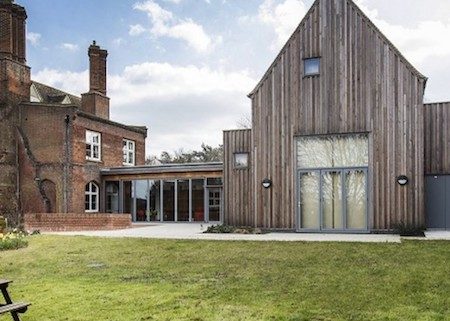The Ultimate Recycling Project
Preserving a historic building is the ultimate recycling project. It’s about upgrading and developing an existing structure instead of constructing a new one – protecting precious resources.
But while old buildings are inherently sustainable as their preservation reduces waste and maximises the use of existing materials, there are also many ways of improving their environmental performance. Shaun Soanes explains.
Conserving historic buildings is part of sustainable development. It prevents the waste of existing resources, minimises the use of natural new resources, provides value economically through revenue in tourism and contributes a range of social values important to our education, well-being and health.
In order to make sure a building has a sustainable future, improving its environmental performance is a complementary objective. This puts pressure on architects to ensure landmark structures are fit for purpose whilst safeguarding their heritage.
Key things to consider
Initially asking a few questions is the way to begin considering how to make an historic building sustainable. Sustainability is about much more than energy consumption and sometimes a big challenge with these buildings is finding ways to keep them in use. Begin by looking at how the building is currently being used and if it can be used more effectively. Measures can be implemented at no cost which involves behavioural changes rather than just making it more efficient.
Then consider what type of heritage protections apply and what you need to make changes. Are your alterations too big or too small? And what will they add?
In the final part of your development, look at the many low-cost measures that can enhance performance environmentally without the need for planning permission. These are things such as adding insulation to hot water tanks and pipes, and even just replacing conventional light bulbs with low energy bulbs.
Use your imagination
Just because a building is old, that doesn’t mean it can’t work with a more modern approach. For example, the regeneration of urban areas often requires new buildings to be constructed beside old ones, and often adapting older buildings to the demands of modern use can require a facelift that combines old with new.
Here at Nicholas Jacob Architects we have worked on projects of this nature, having to balance the original fabric of a building with an inventive approach to design. One recent project that involved this was The Avenue Theatre in Ipswich.
Award-winning work
Judges at the RICS East of England awards earmarked our project at The Avenue Theatre for excellence, announcing our achievements in the plans, design, construction and restoration of the building, home to the Red Rose Chain Theatre Company.
We were incredibly proud of what we achieved on the site which incorporated a number of buildings behind Gippeswyk Hall, a Grade II* listed Tudor manor dating back to the 16th Century.
The brief was to create a space to accommodate a 120-seat theatre studio which was built in the style of a traditional Suffolk barn, linking to but running independently from the Hall. All materials were sympathetically picked to tie the Grade II* listed building with the new one; we worked hard to blend new and old to make the space as both versatile and inspirational.
Environmentally sound
As well as giving the old hall a new lease of life, our conservation work allowed us to add more environmentally friendly aspects to the site.
The width and pitch of the studio was made to match the original buildings’ existing proportions, allowing maximum ventilation. Also, between the two buildings a glass connection was added, providing natural light in the waiting areas, reducing the need for electric lighting.
Providing a suitable environment for audiences was a big aspect of the detailed design. This meant acoustic measures and temperature control, so there could be no opening windows inside the theatre for ventilation. Air source heat pumps were introduced as the primary heat source and a sophisticated heat recovery system was installed – making use of audience and lighting heat.
We also used solar photovoltaics on the flat roof in part of the design, with potential for these to heat stored water.
As a whole, the building was offset with good value of thermal and acoustic insulation and modelled using SBEM.
Giving back to the community
Upgrading existing buildings instead of constructing new ones is an effective way to salvage and reuse materials as well as protect our heritage. England is very rich in historic sites, sought after for their cultural and economic value.
The way of making these landmarks sustainable is by combining traditional forms and materials with today’s culture. But it is also important to remember that sustainable building design isn’t just about culture, but also how users respond to and embrace the building.
The idea isn’t to just make a building environmentally friendly and sustainable, but to make it last so that it continues to be used, looked after in the future, and loved.


 Bentinck House
Bentinck House

